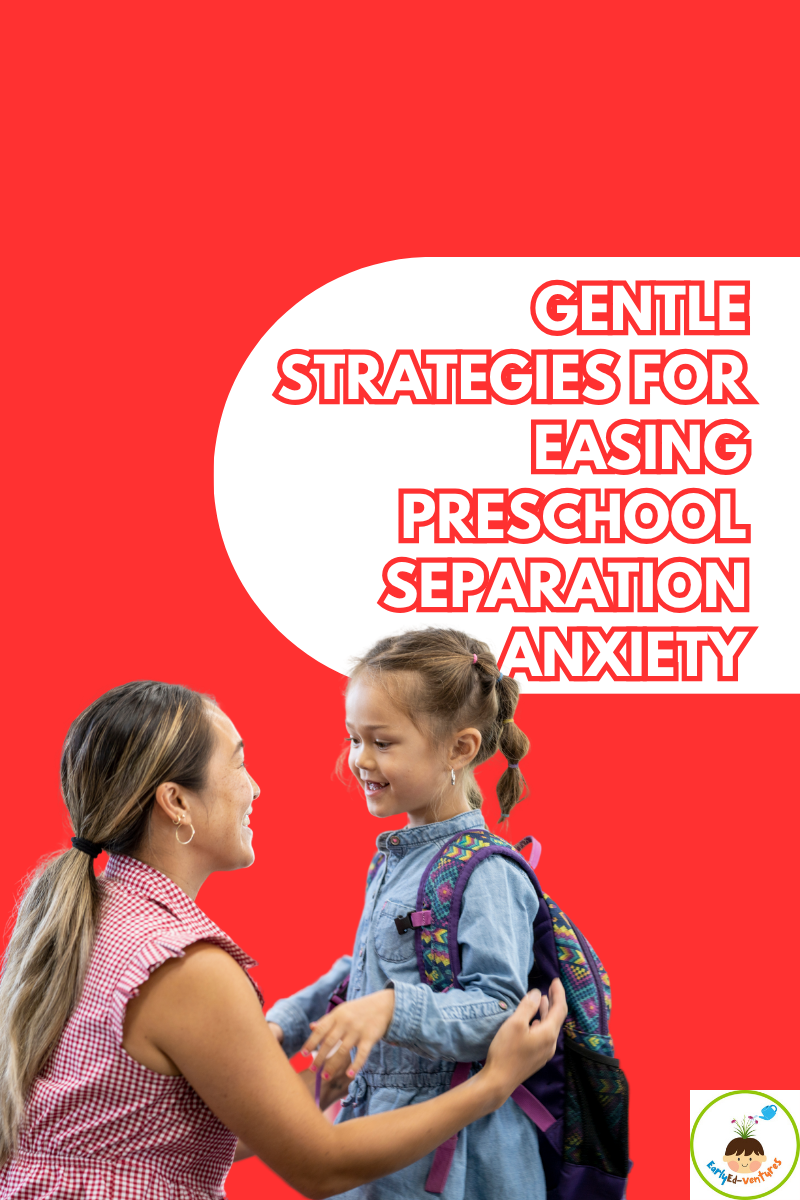Gentle Strategies for Easing Preschool Separation Anxiety

Fuss-Free Drop-Offs
It’s truly heartwarming to watch our little ones embark on new adventures like preschool, isn’t it? Yet, for many of us, this exciting step can come with a familiar ache: separation anxiety. If your heart clenches a little at drop-off, please know you are absolutely not alone. It’s a completely normal, even common, experience for young children to feel a bit nervous or distressed when they first step into an unfamiliar environment, away from your comforting presence. In fact, studies suggest that a significant number—around 30-40% of preschoolers—navigate these very feelings in their initial months.
But here’s the beautiful truth: you have the power to gently guide them through this. It truly comes down to three pillars: patience, unwavering consistency, and a deep well of empathy. Let’s explore some gentle strategies together that can offer your little one the support they need.
Understanding Why Separation Anxiety Happens
Let’s take a moment to understand what’s happening from your child’s perspective. Imagine stepping into a brand new world, full of new faces, new sounds, and new routines. For our little ones, their home, and especially you, are their safe haven. So, when they’re suddenly in an unfamiliar place like preschool, it can feel incredibly overwhelming. They’re still in the early stages of learning independence, and that uncertainty can manifest as crying or clinging – it’s their way of reaching out for that familiar security and expressing, “I’m feeling a bit unsure right now.” Fear isn’t an easy feeling for them to manage on their own, and that’s where your loving guidance comes in.
Gentle Strategies to Help Your Child Cope
The key is to approach each drop-off with understanding and a clear plan. Here’s how you can support your little one:
Acknowledge and Validate Their Feelings
When they express their feelings, try saying, “I understand how you feel, my love, and it’s absolutely alright to feel that way.” This simple validation can be incredibly powerful, helping your child process those big, sometimes unpleasant, emotions. It shows them that their feelings are seen and accepted.
Reassure Them You’ll Return
This is paramount. Consistently remind your child, with calm confidence, that you will always come back to pick them up after school. You can be specific about when you’ll return, for example, “I’ll be back after snack time and outdoor play.” This predictability builds trust and helps ease their uncertainty.
Establish a Consistent Drop-Off Routine
Children truly thrive on routine. Create a simple, consistent drop-off ritual that you follow every single day. This could be a special hug, a quick wave from the door, or a secret handshake. A predictable routine helps them feel more secure and know exactly what to expect, making transitions smoother.
Practice Short Separations at Home
Before school starts, or if they’re already struggling, gently introduce short periods of separation at home. This could be leaving them with a trusted caregiver for an hour, or even having them play in a different room while you’re still in the house. Gradually increase the time to build their comfort with being away from you.
Encourage Communication
Help your child express their thoughts and feelings by talking to them frequently. Ask open-ended questions about their day, what they liked, and what made them feel sad or happy. Reading books about starting school or making new friends can also open up wonderful conversations. Explore our Printable Activity Worksheets that encourage communication and expression, giving them tools to vocalize their feelings more comfortably.
Be Patient and Give Them Space to Adapt
Adjusting to a new environment takes time, and every child’s journey is unique. Be patient with your child and give them the space they need to adapt. Your consistent support and understanding are the most important factors in helping them feel safe and secure in their new school environment.
A Little Surprise: The Power of Tiffin Notes
Beyond the drop-off, a tiny note tucked into their lunchbox can be a powerful mid-day hug. You can download them for free by clicking here. These “tiffin notes” are a wonderfully intimate way to provide comfort and a tangible link to you, right when your child might be feeling a dip in energy or missing home. They offer a personalized reassurance that you’re thinking of them and that you’ll be back soon.
You can use short, sweet, and even funny sentences to bring a smile to their face and reinforce your promise:
- “See you soon”
- “Thinking of you”
- “Hug you soon”
- “Smile and shine”
- “My brave star”
These little messages are a delightful surprise that can turn a challenging moment into a joyful one, shifting their focus from anxiety to anticipation.
Ready to explore more resources? Visit our Printable Materials section for a wide range of engaging activities designed for preschool and kindergarten learners, including our new Tiffin Notes!
